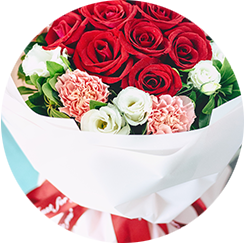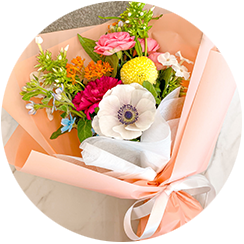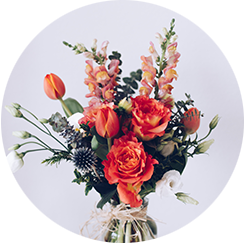Keep Your Flowers Blooming with These 3 Simple Tricks
Posted on 24/05/2025
Keep Your Flowers Blooming with These 3 Simple Tricks
Who doesn't love a garden overflowing with vibrant, blooming flowers? Few sights are as delightful to the senses as lush petals and punchy bursts of color waving in the wind. But if you've ever been frustrated by fading blossoms and dwindling buds, you're not alone. The secret to a garden that's in constant bloom is not complicated--just a little know-how and care. In this comprehensive guide, we'll reveal three simple tricks to keep your flowers blooming longer and brighter. These techniques are tried and true for any gardener--novice or expert--eager to prolong flower blooms and maintain a flourishing landscape.
Why Do Flowers Stop Blooming?
Before we dive into how to keep flowers blooming, it helps to understand why flowers may stop producing those cherished blossoms in the first place. Common reasons include:
- Insufficient sunlight: Most flowers need at least 6 hours of direct sun daily. Less can hinder blooming.
- Poor soil nutrition: Depleted soil lacks the nutrients flowers require for continuous bud production.
- Improper watering: Either too much or too little water stresses plants, leading to less flowering.
- Lack of deadheading: Letting spent blooms remain can signal the plant to stop producing new ones.
- Pest and disease issues: Infested or diseased plants use their resources to survive, not to bloom.
Understanding these factors will help you apply the following tricks to keep your flowers blooming for as long as possible.

Trick #1: Master the Art of Deadheading
What is Deadheading?
Deadheading simply means removing spent or faded blossoms from your flowering plants. This is one of the most effective ways to prolong flower blooms in your garden.
Why is Deadheading Important?
By snipping off dead or dying flowers, you're preventing your plant from going to seed. Most annual and many perennial flowers will slow or stop flower production once they set seed, as their biological imperative has been met. Regular deadheading encourages the plant to redirect its energy into producing new blooms instead of seeds, ensuring a constant display of color throughout the growing season.
How to Deadhead Properly
- Use clean, sharp pruning shears or snips for best results.
- Pinch or cut the faded flower heads back to just above the first set of healthy leaves or a new bud.
- For plants with clusters of flowers (like marigolds or zinnias), remove the individual spent flowers as soon as they fade.
- Be gentle--avoid damaging the healthy stems and foliage.
Pro Tip: Schedule deadheading into your weekly gardening routine for consistently vibrant blooms. This simple task takes just minutes, but the pay-off is a longer, more colorful display from your flower beds.
Trick #2: Feed Your Flowers the Right Way
Why Nutrition Matters for Continuous Blooms
Proper fertilization is key to keeping flowers blooming all season long. Many soils become depleted of essential nutrients over time, especially in established gardens or containers. Supplying the right balance of nutrients ensures your plants have the energy and building blocks to keep producing vivid blooms.
Which Nutrients Help Flowers Bloom?
- Phosphorus (P): Vital for bud and flower development. Look for fertilizers labeled as "bloom boosters" with higher middle numbers (e.g., 10-30-10).
- Potassium (K): Aids general plant health and resistance to disease, promoting better flowering.
- Nitrogen (N): Supports lush growth but too much can lead to foliage at the expense of flowers. Balance is key!
How and When to Fertilize
- Apply a slow-release granular or organic fertilizer at planting time to give roots a boost.
- Use water-soluble fertilizer every 2-4 weeks during peak bloom periods for annuals and perennials.
- Always follow package instructions to avoid over-fertilizing, which can burn plants or inhibit blooming.
- Supplement with compost or well-rotted manure to naturally boost soil fertility.
Pro Tip: Mulch your flower beds with compost or organic material to improve soil structure, retain moisture, and slowly release nutrients. This not only nurtures your blooms but also suppresses weeds that compete for resources.
Trick #3: Water Smarter, Not Harder
Finding the Perfect Watering Balance
It's easy to over- or under-water your flowers, both of which can stunt blooming or cause flowers to drop early. Proper watering is about consistency and understanding your plants' needs.
General Guidelines for Watering Flowers
- Deep Watering: Water deeply but less frequently instead of shallow, daily watering. This encourages roots to grow deeper and access more nutrients.
- Morning Watering: Watering in the early morning reduces evaporation and allows foliage to dry before evening, lowering disease risk.
- Soil Check: Stick your finger into the soil up to 2 inches--if it's dry, it's time to water.
- Container Plants: Potted flowers need more frequent watering, especially in hot weather, but ensure pots have drainage holes to prevent root rot.
Signs Your Flowers May Be Over or Under Watered
- Wilted, yellowing, or dropping leaves and buds often signal overwatering or poor drainage.
- Crispy leaves and flower buds that refuse to open indicate under-watering.
Pro Tip: Add a 1-2 inch layer of mulch around your blooms to help retain soil moisture and keep roots cool.
Bonus Tips: Other Ways to Extend Flower Blooming
Choose Long-Blooming Varieties
Some plants are just genetically programmed to flower longer! For a garden that blooms for months, include long-blooming flowers like:
- Coreopsis
- Geraniums
- Rudbeckia (Black-eyed Susan)
- Petunias
- Salvia
- Lavender
Practice Good Garden Hygiene
- Remove diseased or pest-infested foliage promptly to keep plants healthy and blooming.
- Space plants properly to allow for good air circulation and prevent mold and mildew.
- Regularly weed your beds to ensure flowers aren't competing for nutrients and water.
Adjust for the Seasons
As temperatures fluctuate, the needs of your flowers may change. During extreme heat, consider providing shade cloth or moving potted plants to a cooler spot. In rainy spells, check for drainage issues to prevent root rot.

Common Mistakes That Prevent Flowers from Blooming
Even with the best intentions, it's easy to fall into habits that limit your garden's blooming potential. Here are frequent errors to avoid:
- Placing sun-loving plants in too much shade.
- Ignoring soil pH--many flowers prefer slightly acidic to neutral soil.
- Using lawn fertilizer on flowers--it's often too high in nitrogen, which favors leaves over blooms.
- Forgetting to regularly deadhead spent flowers.
- Skipping fertilization during the blooming season.
- Watering inconsistently or at the wrong time of day.
Conclusion: Let Your Garden Shine All Season
With just a few easy changes to your gardening routine, you can keep your flowers in continuous bloom from early spring until the first frost. Remember these three simple tricks:
- Master deadheading to signal your plants to keep flowering.
- Feed your plants the right nutrients for strong, healthy blooms.
- Water wisely and consistently for happier, longer-lasting flowers.
Beautiful, robust blooms aren't out of reach--just a snip, a sprinkle, and a splash away! With these simple tricks to keep flowers blooming longer, your beds and borders will be the envy of the neighborhood. Don't forget to choose long-blooming varieties and maintain proper garden hygiene for even more impressive results.
Ready to keep your garden blooming all season? Start applying these tips today, and watch as your flowers reward you with weeks--or even months--of colorful, show-stopping blooms. Happy gardening!
Latest Posts
Step into the World of Orchid Care Guide
Cultural Significance of Red Roses on Valentine's Day
Simple Strategies to Preserve Cut Flower Beauty
Seven Hidden Gems About Tulips That Are Bound to Surprise You





